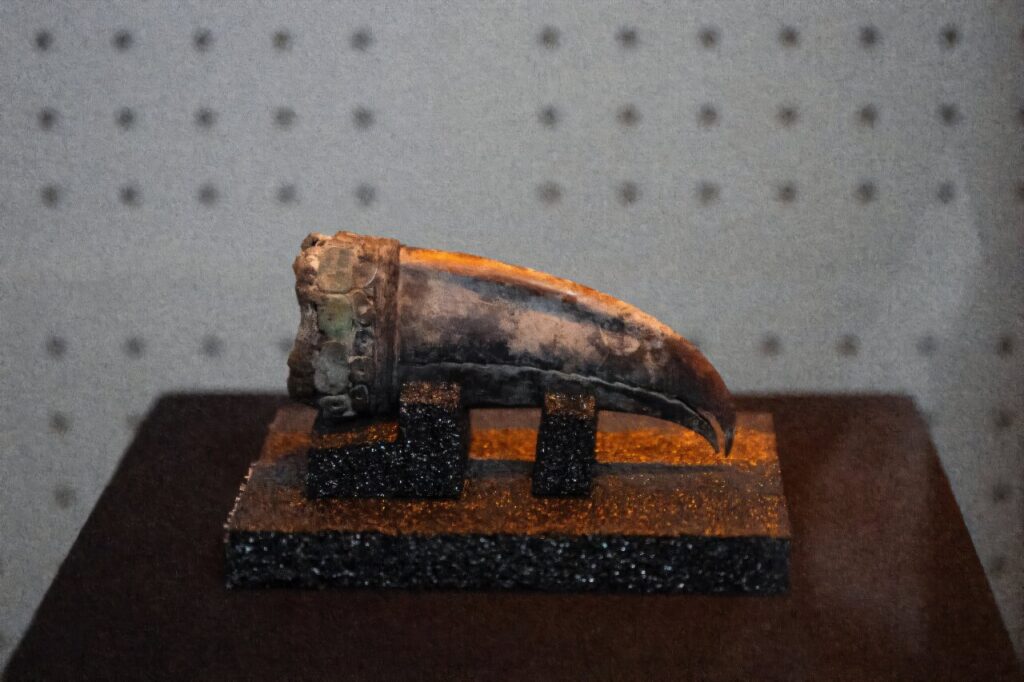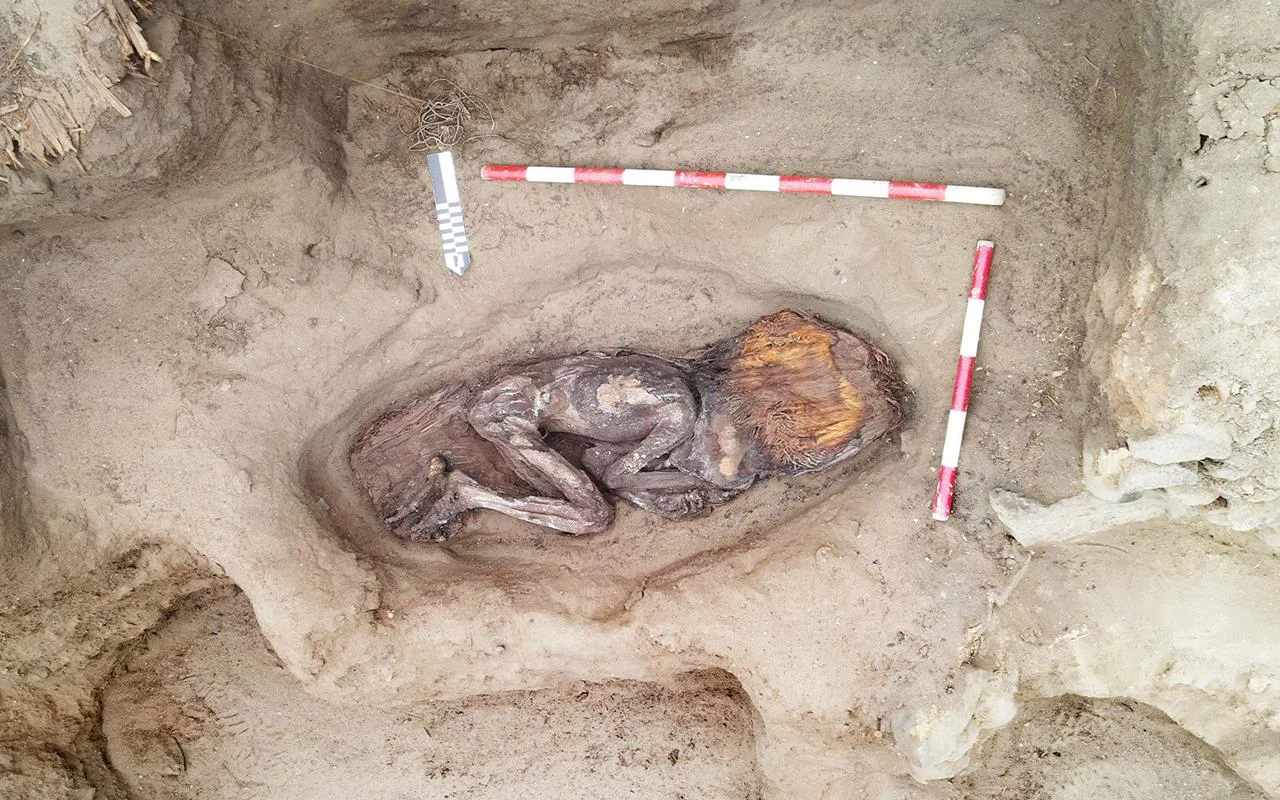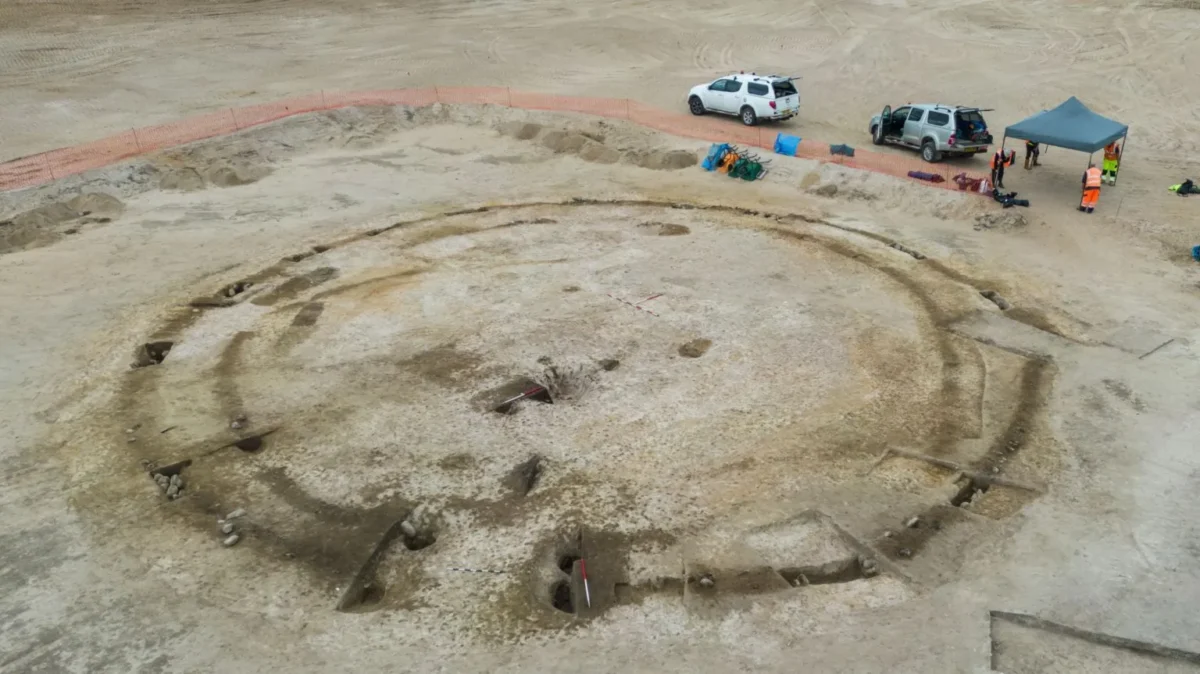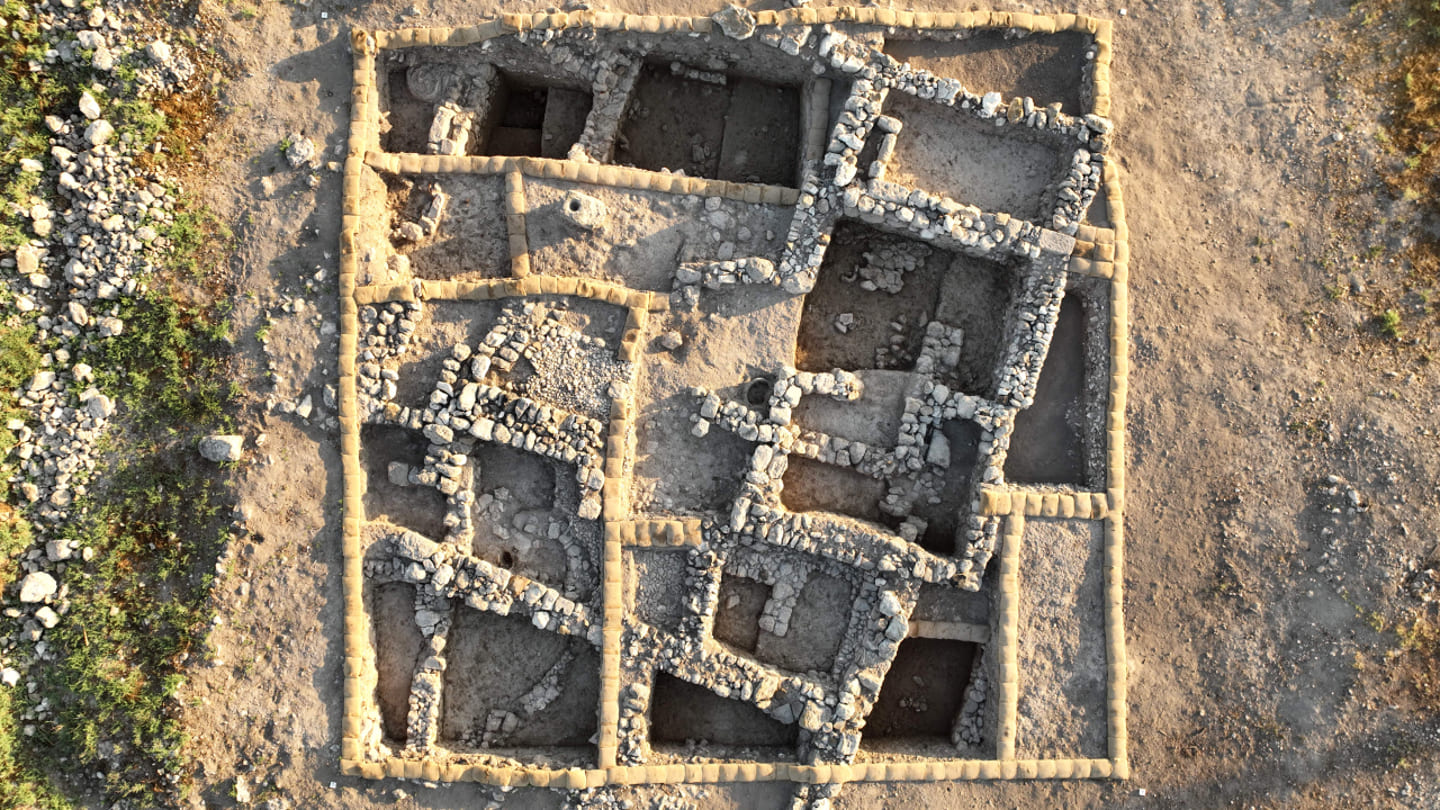Archaeologists in Peru have announced the remarkable discovery of a 5,000-year-old tomb of a high-status woman at the Áspero archaeological site, an ancient fishing settlement and a significant satellite city within the Caral civilization, the oldest known civilization in the Americas. The well-preserved remains, unearthed by Dr. Ruth Shady Solís and her team from the Caral Archaeological Zone (ZAC), offer unprecedented insights into the influential roles women held in early Andean society.
The woman was found wrapped in numerous layers of cotton textiles and reed mats, adorned with an elaborate feathered mantle made from vibrant macaw feathers, showcasing one of the earliest examples of Andean featherwork. A rich array of burial offerings accompanied her, including intricately decorated vessels, weaving tools, a bone needle, a spondylus shell likely from the Amazon basin, and over thirty sweet potatoes. These items not only underscore her high social standing but also reflect the Caral society’s sophisticated trade networks extending as far as the Amazon.
According to the official statement from the Peruvian State, the discovery of the feathered panel and other finely crafted objects indicates the existence of highly specialized techniques during the Caral civilization. Feather art, in particular, highlights the aesthetic and symbolic complexity achieved by this ancient society.
The burial site is located in the Huaca de los Ídolos within the ancient fishing settlement of Áspero, situated approximately 180 kilometers north of Lima. Áspero flourished between 3000 and 1800 BCE, contemporaneous with ancient Egypt, Sumer, and China, yet developed in isolation as a crucial satellite city of Caral. The remains belong to a woman estimated to be between 20 and 35 years old and about 1.5 meters (5 feet) tall. Notably, her state of preservation is exceptional, with some parts of her skin, nails, and hair recovered – a rarity for human remains in the region.

Archaeologists note that this burial aligns with other elite burials found in Áspero in recent years, such as the “Lady of the Four Tupus” and the “Distinguished Man,” suggesting a pattern of ceremonial burials among the elite class. This evidence supports the hypothesis that women held a privileged status and power within Caral society.
A multidisciplinary team is currently analyzing the remains and associated artifacts to learn more about the woman’s health, diet, cause of death, and the socio-cultural significance of the objects buried with her. Archaeologist David Palomino emphasized that this discovery challenges the traditional view of predominantly male rulers and highlights the significant roles played by women in the Caral civilization.
Located in the fertile Supe Valley and declared a UNESCO World Heritage Site in 2009, the city of Caral continues to offer invaluable insights into the lives of its ancient inhabitants, revealing a complex society where women played a vital role in its development and cultural richness.
Cover Image Credit: Remains of a 5000-year-old woman from the Caral civilization. Credit: Ministry of Culture of Peru (Ministerio de Cultura del Perú)





